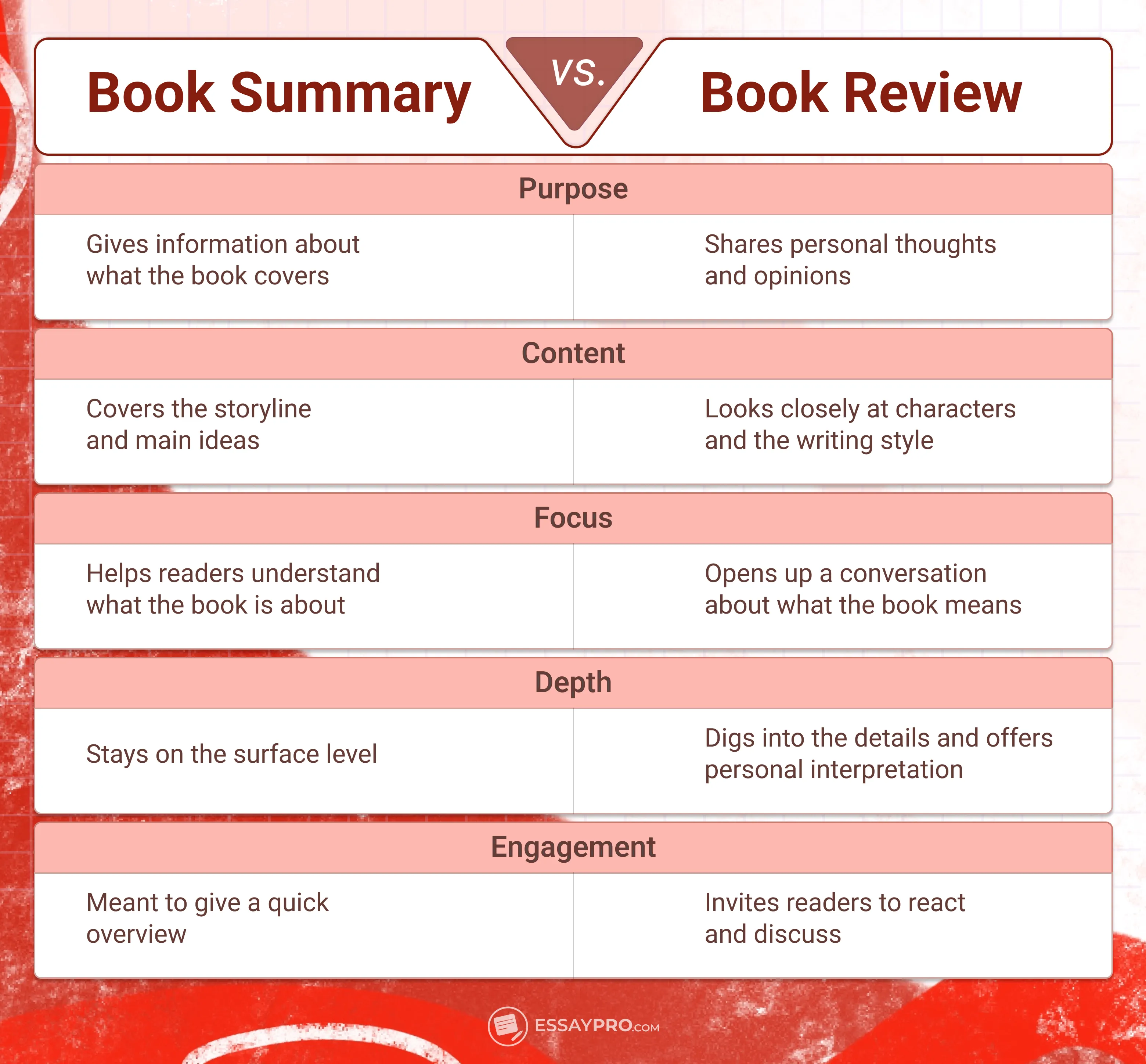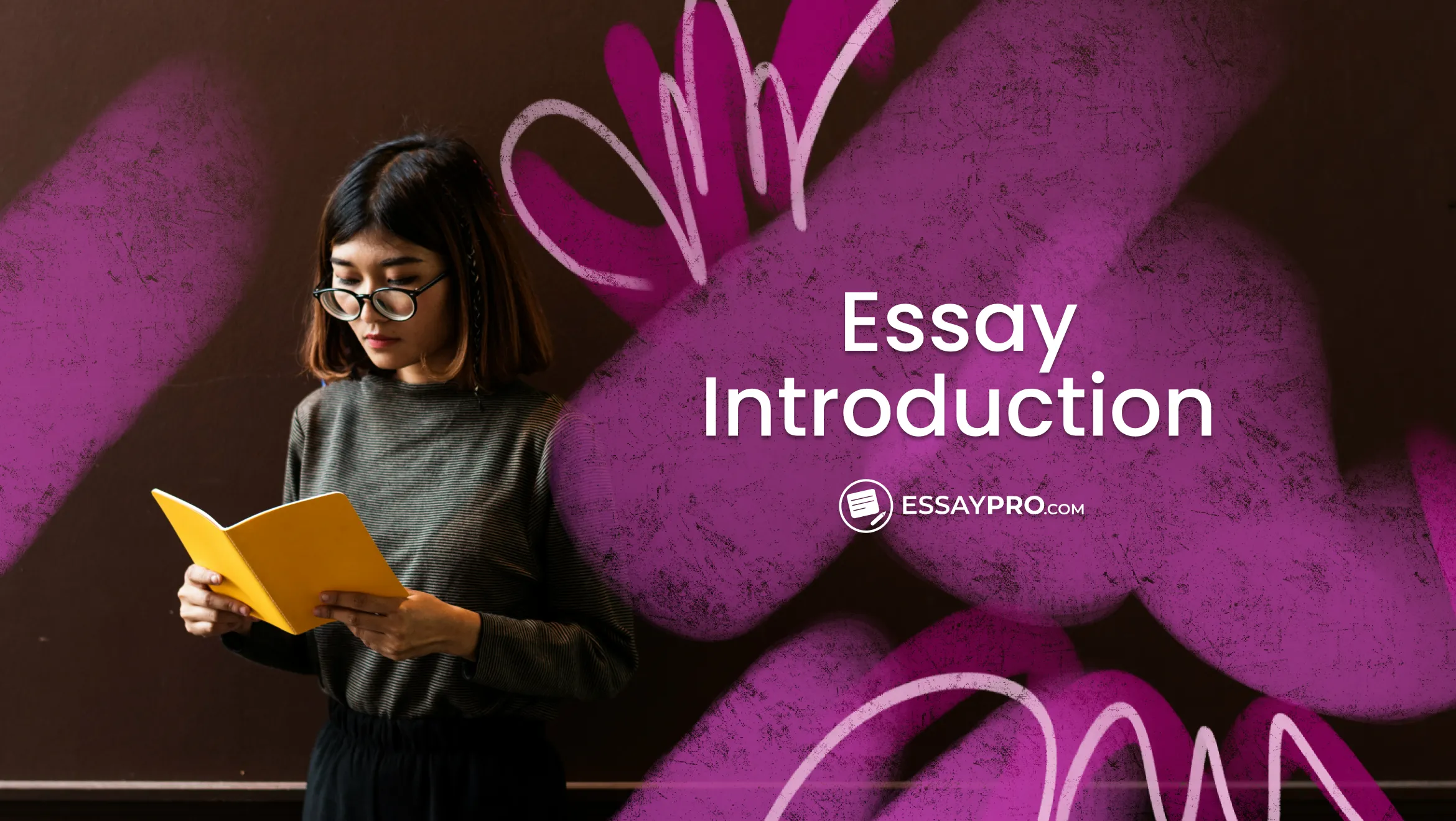A book summary is a concise overview of a book's key points. It typically highlights the main characters, the central plot, and the major themes explored by the author.
Here’s a quick breakdown of how to summarise a book:
- Who, What, Why? Summarize the main character, key events, and central message.
- Short & Sweet: Aim for a fraction of the book's length.
- Your Words, Not Theirs: Rephrase the story without copying the author.
- Plot Pointers, Not Spoilers: Briefly list major plot points without revealing the ending.
- Theme Team: Identify a core theme explored in the book.
If you're secretly wishing 'if only someone would write my papers' – consider it done with our expert assistance!
What Is a Book Summary
A book summary provides a brief version of a book, emphasizing its main points and core ideas. It offers readers an insight into the book without delving into all the details. Similar to a snapshot or a concise overview, it encapsulates the book's essence. Rather than exploring every minor detail, a summary zeroes in on the broader themes and messages.
It's a method to grasp the essence of a book without needing to read it in its entirety. Summaries serve numerous purposes; they can assist you in determining whether a book is worth your time, refresh your memory on books you've previously read, or offer a handy reference for crucial details. A book summary is a condensed version presenting the key points in a brief format.
Btw, do you stick to the to-read list? Join our discussion on books in EPro Community!
Meanwhile, you always have an alternative option to buy essay online and save yourself some time. If that sounds like a better plan, feel free to reach out to us whenever you need to!


How Long Is a Summary of a Book
A long book summary doesn’t necessarily mean a good one. In fact, the briefer and clearer it is, the better for the reader. A few solid paragraphs should cover the basics in most situations. If you’re writing it for college or even something more formal, you might stretch it to a page or two.
How long is a summary of a book really depends on its purpose. A short overview of a book can work just fine if you simply aim to give someone an idea of what the book is about. If you’re writing for an assignment, though, it’s best to check the guidelines and stick to them. As long as you mention the most important moments and themes so the reader gets a proper understanding of the story, you’re doing great.
Book Summary Vs. Book Review
This question often confuses people. A summary and a review sure sound like they’re the same, but they’re really not. A book summary definition is the overview of what the book is about: the plot, the main characters, themes… It shouldn’t include any analysis or personal opinions.

If you want to learn how to write a book review, though, you should know that it is far more personal. It tells you what the writer thought and felt about the book: what they loved about it, what didn’t work, and whether they’d recommend it. So, if you’re trying to help someone understand the book itself, you’re writing a summary; if you’re weighing in on how it made you feel, that’s already a review.
Regardless of which one you need for your class, EssayPro’s book summary and book review writing service can help you submit papers you can be proud of.
How to Summarize a Book
When you summarize a book, you should know which parts to pick out. You should manage to choose what’s important without shrinking the book down or skipping the important parts. The best place to start, in general, is figuring out why you’re writing the summary in the first place. But that’s just the beginning. Let’s go into more detail on how to summarize a book.
.webp)
1. Prepare to Summarize a Book
Before you start writing the summary of a book, take your time with the reading. Go in with the mindset that you’re not just trying to get to the last page but rather trying to understand what’s actually happening. Keep a notebook or a phone to jot things down while you’re reading, and pay attention to the turning points. Note any lines that stick with you and the themes that come up more than once. Those are the steps on how to start a book summary.
If you’re in a rush, it’s okay to glance at chapter summaries to get a feel for how the book is structured. But don’t rely on them alone. You still need to read the book yourself.
2. Identify the Main Characters and Setting
Take a minute after finishing the book and think about who the story really followed. Start with the main character, then think about who else influenced the events that happened in the story. You don’t have to list every single person who had a line; simply keep your focus on the ones who were pushing the story forward.
Now think about where and when the story takes place. Give the reader enough context without spoiling too many details. A few clear sentences are enough to set the scene without giving away the entire summary.
Read also: Pride and Prejudice summary.
3. Outline the Central Plot or Main Idea
After introducing the characters and setting, it's time to outline the book's central plot or main idea. This step helps readers understand the overall storyline and the key events that drive the narrative forward.
Continuing with our example, we would outline the central plot like this:
'The central plot of 'The Catcher in the Rye' revolves around Holden Caulfield's journey of self-discovery and rebellion. After getting expelled from his prep school,Holden decides to leave early and spends a few days wandering around New York City. Throughout his escapades, Holden grapples with themes of identity, alienation, and the loss of innocence. Along the way, he encounters various characters and experiences that shape his perspective on life.'
In this step of summarizing a book, we provide a brief overview of the main storyline, highlighting the protagonist's journey and the themes explored in the book. This gives readers a sense of the overarching plot.
Read also: Divine Comedy summary.
4. Summarize Key Events or Themes
Here, highlight the most significant events or recurring themes in the book. Events could include major plot twists, character developments, or key moments of conflict. Themes, on the other hand, are recurring ideas or messages that the author explores throughout the narrative. This step of how to write a summary of a book helps readers understand the most significant moments and ideas that drive the story forward or convey its message.
Using our example, we would summarize key events or themes like this:
'Throughout 'The Catcher in the Rye,' Holden Caulfield encounters a series of memorable events and grapples with various themes. From his interactions with his family and peers to his encounters with strangers in New York City, each experience contributes to his ongoing search for authenticity and connection. Themes of innocence, alienation, and the loss of childhood innocence permeate the narrative as Holden navigates the complexities of adolescence and the adult world.'
Read also: Hobbes Leviathan summary.
5. Condense Supporting Details
After summarizing the key events or themes, the next step is to condense supporting details. This involves focusing on the most essential aspects of the story while omitting minor details or subplots that are not crucial to understanding the main narrative.
Continuing with our example, let's include subplots, character relationships, or descriptive elements that enrich the reading experience.
‘Throughout his journey in New York City, Holden Caulfield encounters a variety of characters, including his sister Phoebe, his former teacher Mr. Antolini, and a young prostitute named Sunny. These interactions provide insight into Holden's character and his struggles with loneliness, disillusionment, and the desire for authenticity. Despite his rebellious nature, Holden ultimately longs for connection and understanding in a world he perceives as phony.'
Read also: Othello summary.
6. Conclude with a Recap
In the final step, briefly recap the main points you've covered in your summary. Then, offer your own reflections or insights about the book. Did you enjoy it? What aspects did you find most compelling? This section allows you to share your personal reaction to the book and provide a conclusion. Let’s review the final variant of our summary of a book example:
'In conclusion, 'The Catcher in the Rye' is a timeless coming-of-age novel that explores themes of identity, alienation, and the search for authenticity. Through the journey of its protagonist, Holden Caulfield, readers are invited to reflect on the complexities of adolescence and the challenges of navigating the adult world. While Holden's rebellious nature may initially alienate some readers, his underlying desire for connection and understanding resonates deeply with audiences of all ages. Overall, 'The Catcher in the Rye' remains a poignant and thought-provoking exploration of the human condition.'
Book Summary Example
Let’s take a look at a real book summary example so you can reference it while you’re writing your own. This paper follows the correct book summary format, so keep reading if you want to learn what is a brief summary of a book.
How Do I Avoid Plagiarism When Summarizing a Book?
When you're writing a summary, staying original matters just as much as getting the details right, especially if it’s for a college assignment. It’s not a research paper, sure, but it doesn’t mean you shouldn’t be careful not to copy the author’s words too closely. Plagiarism can happen even when you don’t mean to. Here’s how you can keep both your writing and academic integrity clean:
- Read first, write after. Don’t summarize with the book open in front of you. Get the idea in your head, then explain it in your own words.
- Use your words. Think about how you'd say something to a friend who hasn’t read it and write that way. Avoid taking exact phrases from the text.
- Don’t rely on paraphrasing tools. They might switch up a few words, but they won’t make the summary sound like you.
- If you include a quote, make it clear. Use quotation marks and mention it’s from the book. Avoid using too many direct quotes; prioritize using your own voice.
- Check your work. If anything sounds a bit too similar to the original, change the phrasing or remove it completely.
To Sum Up
A book summary helps you understand the story without overwhelming yourself with every detail. Instead of just retelling the story, you’re helping the reader catch what stays with them after the last page. To write a proper summary, you need to pay attention to the characters who shape the story and notice the themes that keep coming up. Once you have that, the summary builds itself. It also always helps to take a look at real book summary examples for students so you know how the structure should look.
If you’re still confused about getting through the book summary on your own, let EssayPro step in. Our professional service can take complicated stories and turn them into well-structured summaries for you!
Lost for Words in the Book Summary?
Entrust our experts to create a stellar summary that hits all the right notes!
FAQ
What Is the Format for a Book Summary?
A solid book summary starts with the book’s title and the author’s name. Then you give a quick overview of the main character and the situation they’re in. From there, you can start reviewing the important events without diving into every small detail. At the end, you should mention the book’s main message.
What Are the 5 Steps of Summary Writing?
Here’s a step-by-step approach to writing a book summary:
- Read the book carefully
- Outline the main idea
- Identify the most important characters and themes
- Write everything in your own words
- Review and proofread
How Do You Start a Book Summary?
Begin with a simple sentence that tells the reader which book you’re summarizing and who wrote it. Then, introduce the main character. You’re not jumping straight into the plot at this point, but rather giving them background information so they can understand what’s coming next.

Adam Jason
is an expert in nursing and healthcare, with a strong background in history, law, and literature. Holding advanced degrees in nursing and public health, his analytical approach and comprehensive knowledge help students navigate complex topics. On EssayPro blog, Adam provides insightful articles on everything from historical analysis to the intricacies of healthcare policies. In his downtime, he enjoys historical documentaries and volunteering at local clinics.
- How to Write a Summary | English Composition 1. (n.d.). https://www.kellogg.edu/upload/eng151/chapter/how-to-write-a-summary/index.html
- Book Summaries: 1,300+ Free Summaries of the Best Books. (2024, May 2). Four Minute Books. https://fourminutebooks.com/book-summaries/
- Book Summaries: Popular Book Summaries in 3 Sentences or Less. (2020, November 12). James Clear. https://jamesclear.com/book-summaries






